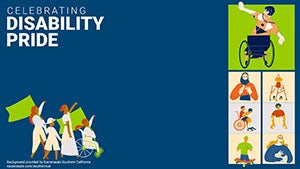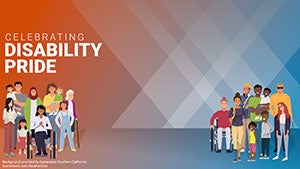What is disability pride? How do you define pride?
Disability pride emerged in response to negative views of disability and to promote human rights. Many people view their disability as an integral part of who they are, rather than something that should be separated from their identity.
There is no one definition of disability pride, as it means different things to different people, so we suggest checking out the resources below to learn more from diverse voices.
What is the history of Disability Pride Month?
On July 26,1990, after a hard-fought battle from disability advocates and allies, the Americans with Disabilities Act (ADA) was signed into law. This landmark legislation ensured disabled people had greater access to employment, transportation, and the community. The first official Disability Pride celebration was in 2015, on the 25th anniversary of the ADA. Now, every July, we celebrate Disability Pride Month to center and celebrate disabled people.
What is self advocacy?
Self advocacy is simply advocating for one’s own rights rather than other people advocating on your behalf. There are a lot of self-advocates in the disability community pushing toward change in politics and society that directly impacts their lives. But being a self-advocate does not mean you fight alone — you fight alongside others with similar goals.
What is person-first or identity-first language?
Person-first language positions the word person before the disability, as the commonly-used phrase “person with a disability” or “people with disabilities.” Many feel that this wording ensures that people can look beyond the disability to see that person as they are, while others feel this further stigmatizes disability by separating it from one’s identity.
Critics of person-first language usually prefer identity-first language. The latter is used in phrases like “disabled person” or “autistic person,” where the disability identity comes first and is intrinsically linked with personhood. This terminology is often preferred by self-advocates and disability-led organizations and is becoming more popular.
Regardless of how someone identifies, it’s important to respect the terms they use to describe themselves. If you are unsure whether or not to use identity-first or person-first language, it’s okay to ask.
| Disability Pride Blue eBackground | Disability Pride Orange and Blue eBackground |



